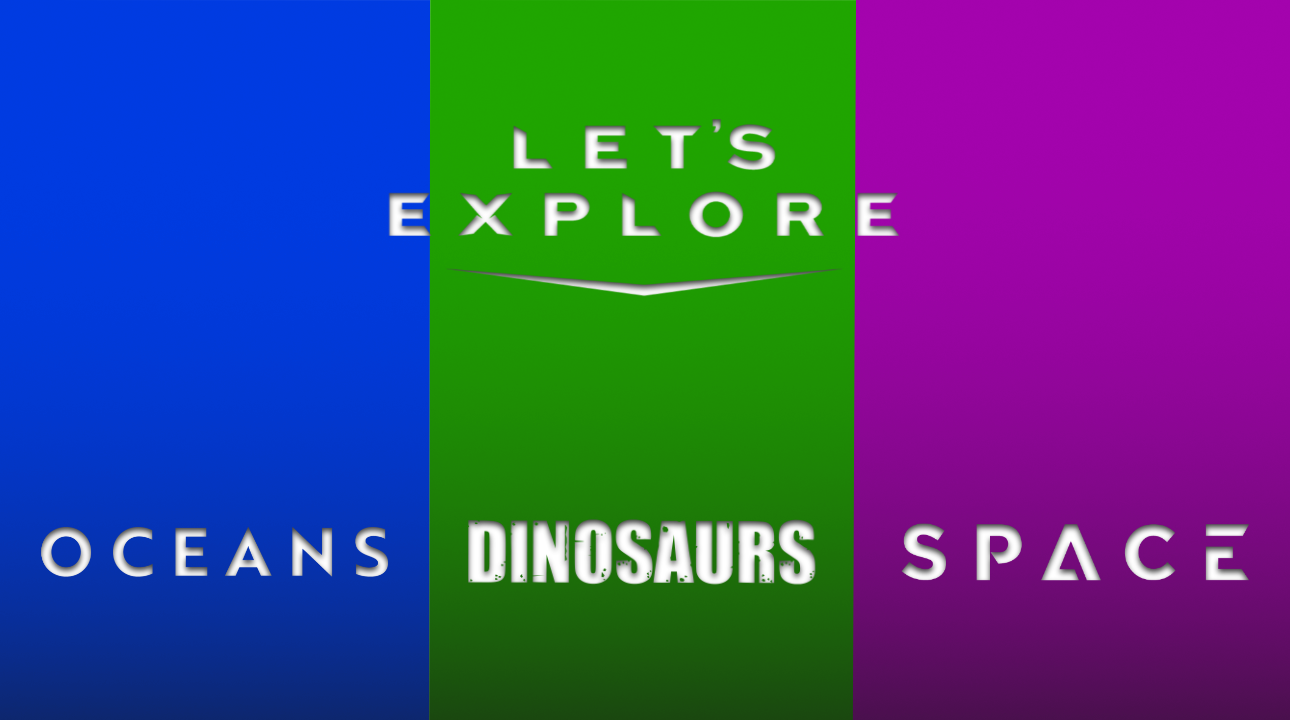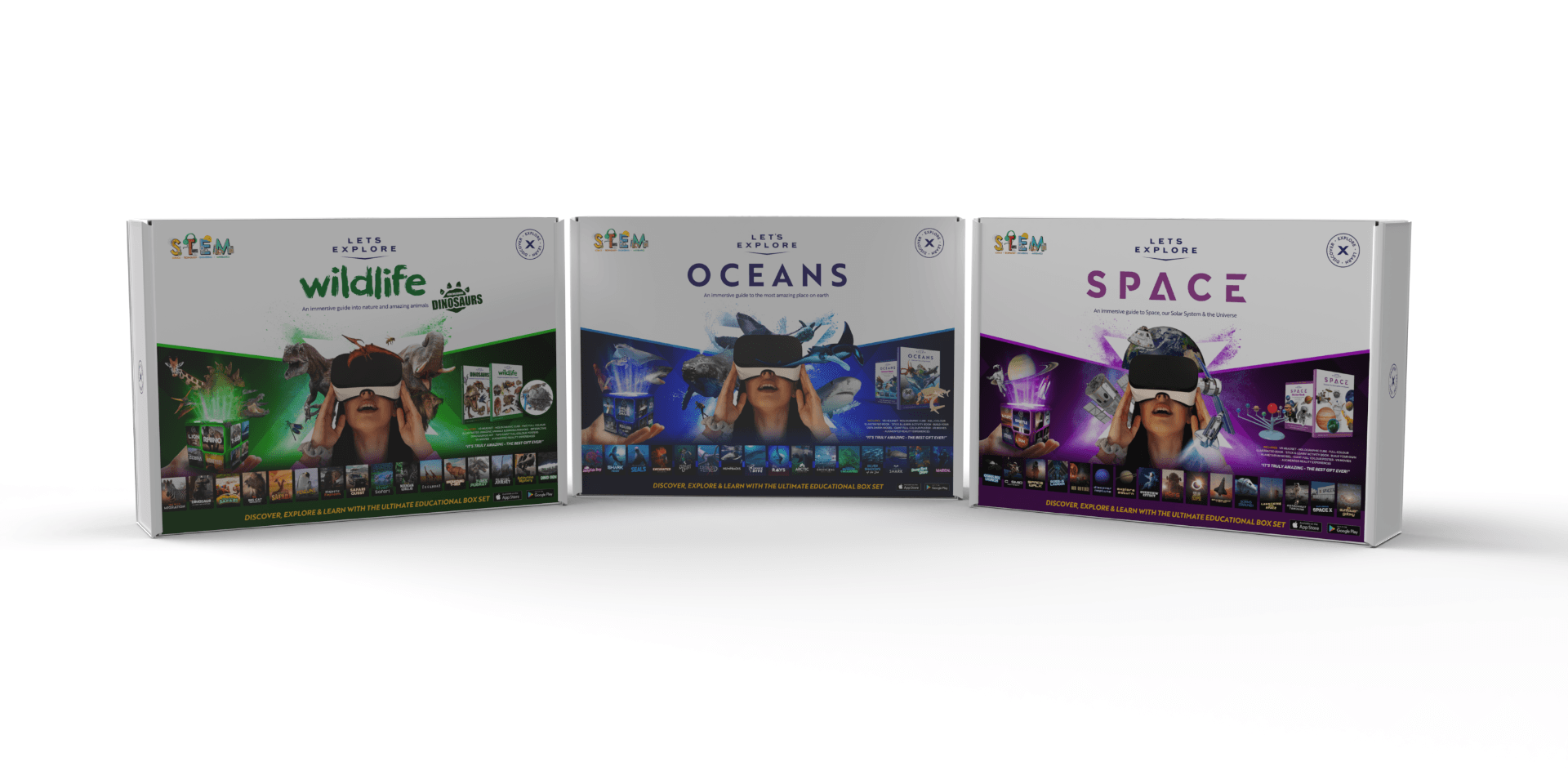Project
Let's Explore

About
Released: Sept 2023
Platforms: iOS and Android
Let's Explore was a suite of three themed educational smartphone apps, each one including 360 video streaming, AR experiences and a quiz section.
The three apps were:
- Let's Explore: Oceans
- Let's Explore: Dinosaurs (ft. Wildlife)
- Let's Explore: Space
AR Experiences
As well as VR, Let's Explore utilised AR adding an extra layer of interaction and immersion. Using the physical cube that came with the boxed project, users could scan this to hold various interesting items in the palm of their hands. 'Let's Explore: Oceans' and 'Let's Explore: Space' both had 16 AR models, however, because of the duel theme, 'Let's Explore: Dinosaurs' had 30 AR models (15 dinosaurs and 15 wildlife).
Video Streaming
Each app included 16 streamable 360 videos. Using the Google Cardboard Unity plugin, users could wacth rhe included videos on their phone in their hands, or place it into a VR headset and step into the action to dive with sharks, go on safari, or watch a rocket launch at NASA. Let's Explore allowed people to really experience and learn about, a host of activities that they wouldn't be able to otherwise whilst learning about the theme of the app.
Quizes
Utilising the knowledge gained from the videos and AR experiences, users could then challenge themselves in the quiz section. Choosing from 16 quizes, they would answer 10 multiple choices questions, as fast as they could, to earn the highest score they could.
Development
For Let's Explore I worked as the solo front end developer, using the app design from a contractor and working with the back-end web developer for any back-end API communication between app and server.
I was solely responsible for building and testing on both platforms (iOS and Android), as well as store mananagement of the apps (app descriptions, screenshots, etc)
All three Let's Explore apps were developed over 8 months and released on the same day. The majority of those 8 months were spent developing a template project, exported as a package. Using the package, 'Let's Explore: Oceans'
was develoved along side the template project, which allowed the template to be feature complete with a working project as a guide. Once the template had reached a state considered "finished" two new projects were created
for Dinosaurs and Space, these were then up and running, ready for release, within 3 weeks.
Content Curation and Creation
Let's Explore had two types of content that required sourcing - 360 videos that fit the themes of each app, and 3d art to be used in the AR experiences.
AR Content
From the start it was decided to use models purchased from the Unity Asset Store to build interesting scenes. These would then be coupled with a voice over talking a little bit about the creature or object
in the scene. It was my responsibility to decide what AR content each app was going to have, and to source their models. For 'Let's Explore: Oceans' and 'Let's Explore: Dinosaurs' We then used freelance artists
to put together the environments for each creature. I chose the freelancers, and managed their work. Once they delivered the finished products I then imported them into the correct project, and made any necessary changes -
post processing/lighting tweaks, positions, fog settings and (most importantly) optimisation. All of the 'Let's Explore: Space' AR content was dealt with by myself.
Video Content
From the start of development on Let's Explore we had a contractor tasked with sourcing 360 videos that would fit each theme, which I would give input on suitability and quality. Unfortunately, with a month left until
launch I needed to step in and take over this task. Although many videos had been chosen, none had been processed, and there was still a lot to be found. Approximately a week after I took over, we had all the videos we
needed, processed and handed over to the web developer for processing with ffmpeg to create various versions of each video in different bit rates, so that a user would be delivered a lower quality video rather than encounter buffering.
The apps launched on time, with all content ready and working.
After the licensing expire on some videos, they were replaced by content I created - using Unity to animate and render 360 videos. More information here.
